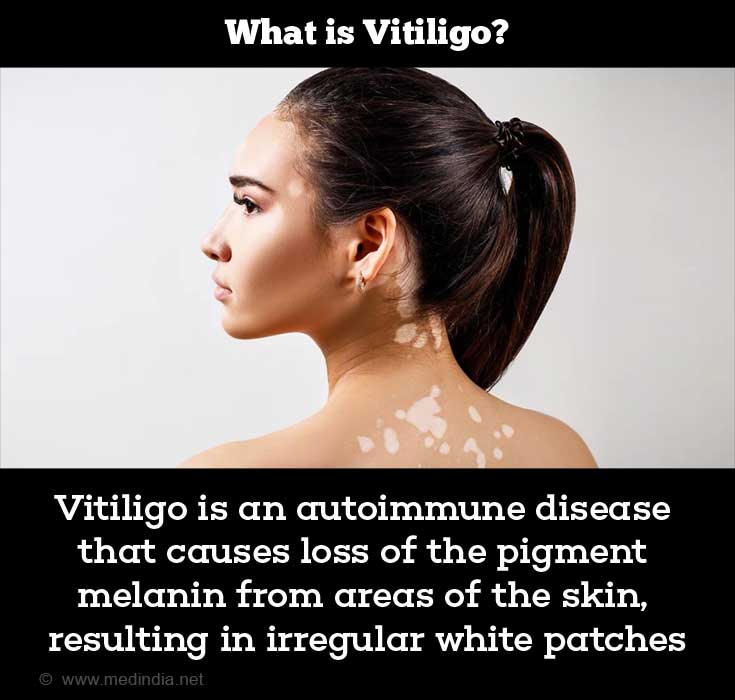Skin pigmentation disorders
Skin pigmentation disorders are caused when there is an excessive or reduced production of melanin. It results in the skin appearing blotchy or discolored, darker or lighter.
These are conditions that are caused when there is an excessive or reduced production of the pigment, melanin. This pigment is responsible for the color of the skin, eye and hair and is also responsible for forming a barrier against the ultraviolet radiation.
Skin pigmentation disorders result in the skin appearing blotchy or discolored, darker or lighter. Pigmentation problems are universal; some, like age spots, are quite common while others, such as albinism (caused by recessive genes), are very rare.
Hypopigmentation is caused when the body fails to produce adequate melanin. The classical examples are the two conditions, albinism and vitiligo.
- Albinism is a genetic condition that results in the complete absence of pigment. Hence an Albino typically has a pale skin, white, yellow or pale hair, and light eyes. Visual impairment and skin cancer are common among people with albinism.
- vitiligo is a condition characterized by smooth, depigmented white spots on the skin. It affects almost 2% of the population and is more evident in people with dark colored skin. Some researches believe it to be an autoimmune disorder. Others associate it with Addison’s disease and hyperthyroidism

Hyperpigmentation, results in excessive production of melanin resulting in the skin becoming darker than normal. Many causative factors are cited such as excessive sunbathing, poor nutrition and drug reactions. Wounds and scars also can develop darker patches of skin. Some of the examples include -
- Lamellar ichthyosis (‘fish scale’ disease) an inherited disease characterized by dark, dry and scaly patches of skin.
- Lichen simplex chronicus is a skin disorder in which dark patches develop. It is often accompanied by severe itching.
- Melasma, is another case of hyperpigmentation of the skin, that commonly occurs during pregnancy due to hormones. It can also occur in women on hormone replacement. Here, a discoloration develops over the bridge of the nose and cheeks. This often disappears after childbirth.
- People with systemic lupus, an autoimmune disease, may develop a butterfly-shaped, dark- colored mask on their faces.
- Moles, age spots, freckles and birthmarks, are other examples of hyperpigmentation. They are all usually harmless.
 MEDINDIA
MEDINDIA

 Email
Email
Hi I got some small white patches at my legs later started at stomach and hands i consulted dermatologist. Doctor said that iam suffering from tinea versicolor, Its almost completed one year. I used TeaTree oil, ketoconazole cream but no use. Please help me on this...
I suffer from vitligo at such an early age, my parents went to doctors in many places with the hope of curing me of the disease. However, my conditions did not get any better despite the expense of a lot of money. They decided to have a try and took me to a Chinese hospital. The affected sites on my body had improved significantly in less than a month. After reinforcement treatment of experts, I have completely recuperated my health and I have become cheerful.
plus, it is pure herb,and does not have any side effect, and no reoccurance. see more on the web of vitiligotcm
G K Tyagi[Delhi], I have been suffering with Skin- Allergy for the last 5-6 years, there is a feeling of itching specially in some parts of legs below knees, on my back, it is very high during night time. Kindly advise me for its cure. Thanks.
hard skin surrounding some open wounds can get up to 3\16 in deep has done damage face legs hands andarms seams to follow veins sore area no real pain i do have a cat hardtofigger
i have gathered a 3 centimetre collection of fat on my left feet. what is it? can i cut it or remain as it is?
Please don't try to remove the fat by yourself. You may get infected. Go to your doctor before deciding to go for a surgery.
Consult Dermatologist Online
Dr. Vijay Gupta
MD
9 years experience
SKINCITY, pilibhitbypass Road, Bareilly
Dr. Jaypriya C.D
MBBS
15 years experience
Saravana Clinic, Ashok Nagar, Chennai
Dr. Riswana Nasrin Nazeer Ahamed
MBBS, MD
7 years experience
Chua and Arif Specialist Clinic , Bandar Seri Begawan, Gadong
What's New on Medindia
Articles
Follow @MedIndia
Skin Disease - Related News
Drugs for Skin Disease